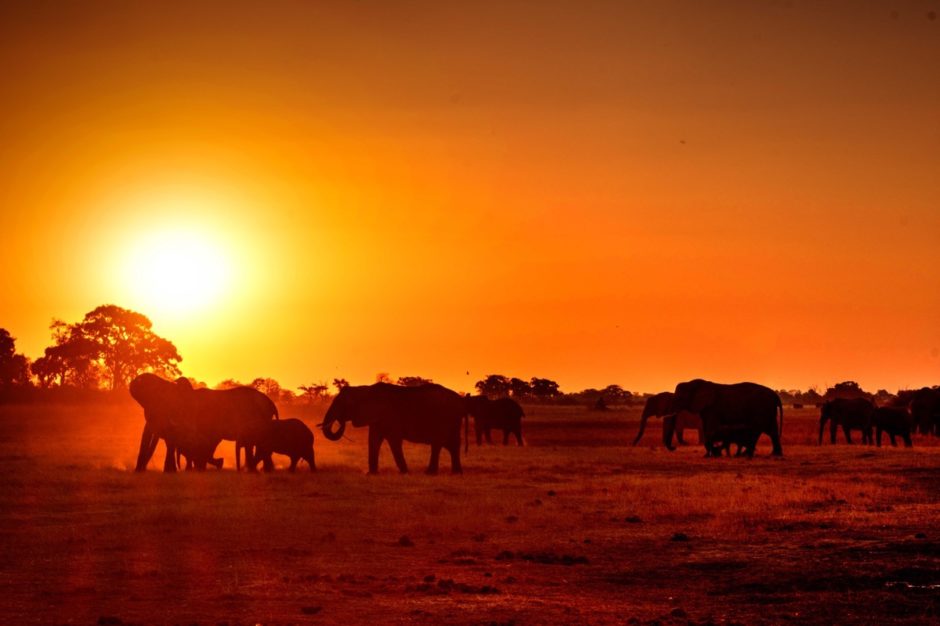It has been a desire of mine for a long time to visit Scotland. We finally started our trip with a flight from Orlando to Glasgow aboard Virgin Atlantic. We flew Premium Economy, and the service was outstanding. Comfortable seats with plenty of leg room. Highly recommend Virgin Atlantic. We stayed at Hampton by Hilton in the center of town, and were only in Glasgow for two nights, basically a day and a half. We weren’t expecting much but found we liked the city immensely. From Wikipedia:
The area around Glasgow has hosted communities for millennia, with the River Clyde providing a natural location for fishing. The Romans later built outposts in the area and, to keep Roman Britannia separate from the Celtic and Pictish Caledonia, constructed the Antonine Wall, remains of which can still be seen in Glasgow today.
Glasgow itself was founded by the Christian missionary Saint Mungo in the 6th century. He established a church on the Molendinar Burn, where the present Glasgow Cathedral stands, and in the following years Glasgow became a religious centre. Glasgow grew over the following centuries. The first bridge over the River Clyde at Glasgow was recorded from around 1285, giving its name to the Briggait area of the city, forming the main North-South route over the river via Glasgow Cross. The founding of the University of Glasgow in 1451 and elevation of the bishopric to become the Archdiocese of Glasgow in 1492 increased the town’s religious and educational status and landed wealth. Its early trade was in agriculture, brewing and fishing, with cured salmon and herring being exported to Europe and the Mediterranean.[21]
Following the European Protestant Reformation and with the encouragement of the Convention of Royal Burghs, the 14 incorporated trade crafts federated as the Trades House in 1605 to match the power and influence in the town council of the earlier Merchants’ Guilds who established their Merchants House in the same year.[21] Glasgow was subsequently raised to the status of Royal Burgh in 1611. Glasgow’s substantial fortunes came from international trade, manufacturing and invention, starting in the 17th century with sugar, followed by tobacco, and then cotton and linen, products of the Atlantic triangular slave trade. https://en.wikipedia.org/wiki/Glasgow
Glasgow became a major industrial center, particularly in shipbuilding, being one of the biggest ports in the British Isles, and after the decline of industry, became a vibrant financial ad business services center.
As usual, we took the hop-on hop-off bus around Glasgow to get a good overview of the city. Before jumping on the bus we walked along the shopping district on Buchanan Street.

Here is the concert hall.

A bagpipe band playing along the street
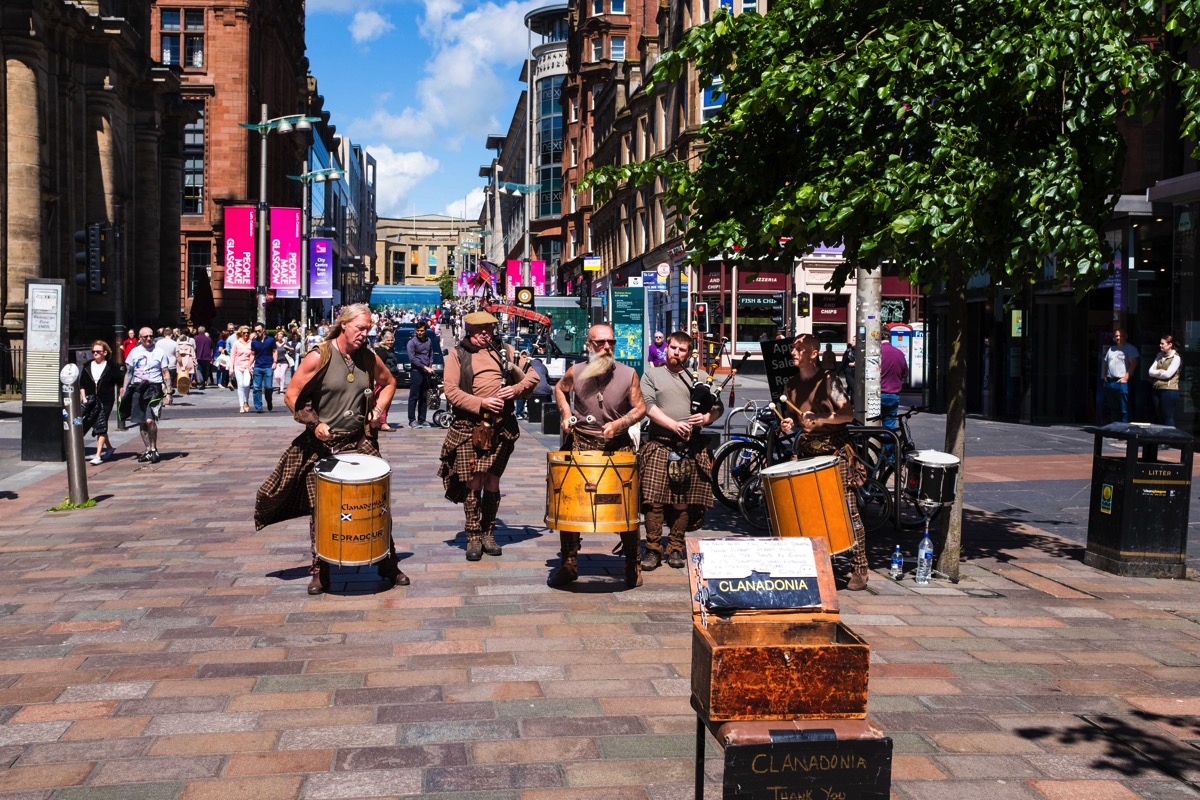
One of our first stops was the Glasgow Cathedral. The cathedral is built on the site where the first bishop of the ancient British kingdom of Strathclyde, St. Kentigern or Mungo is buried. It is the only originally Roman Catholic cathedral on the Scottish mainland to remain intact after the Protestant Reformation. It now belongs to the Church of Scotland, an Presbyterian denomination.https://en.wikipedia.org/wiki/Glasgow_Cathedral
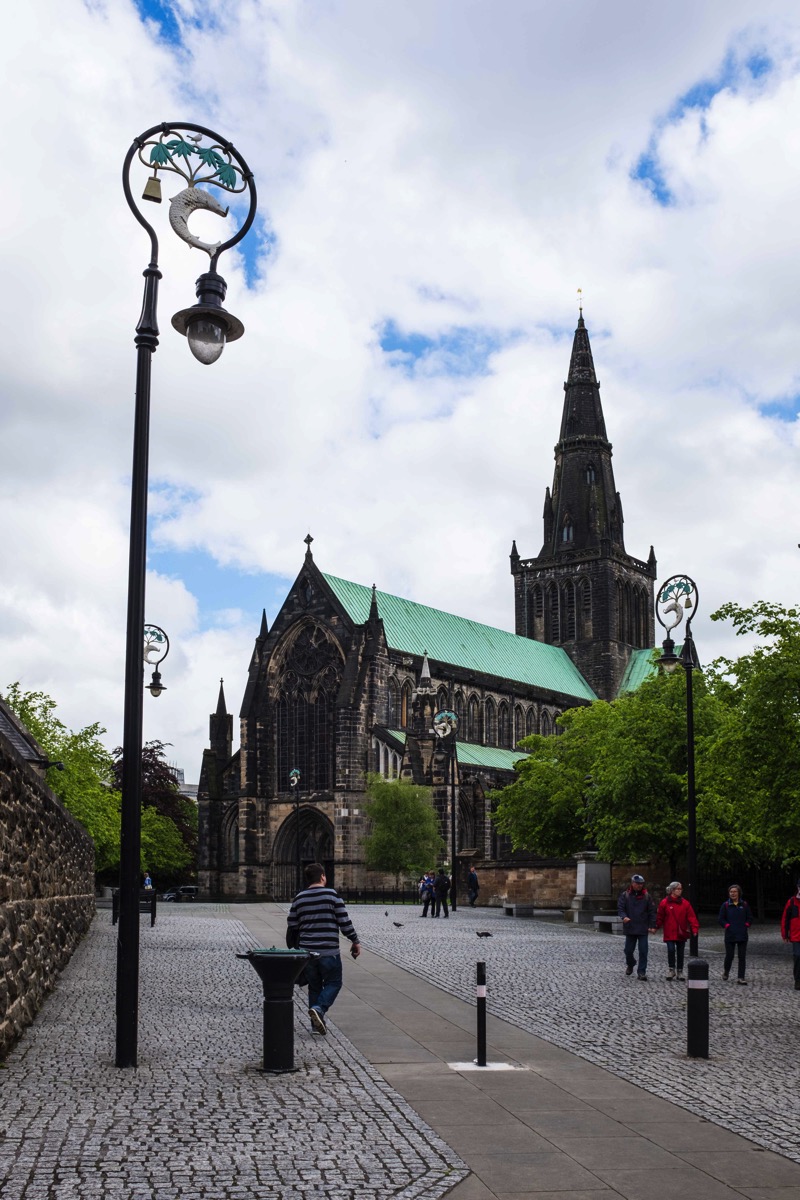
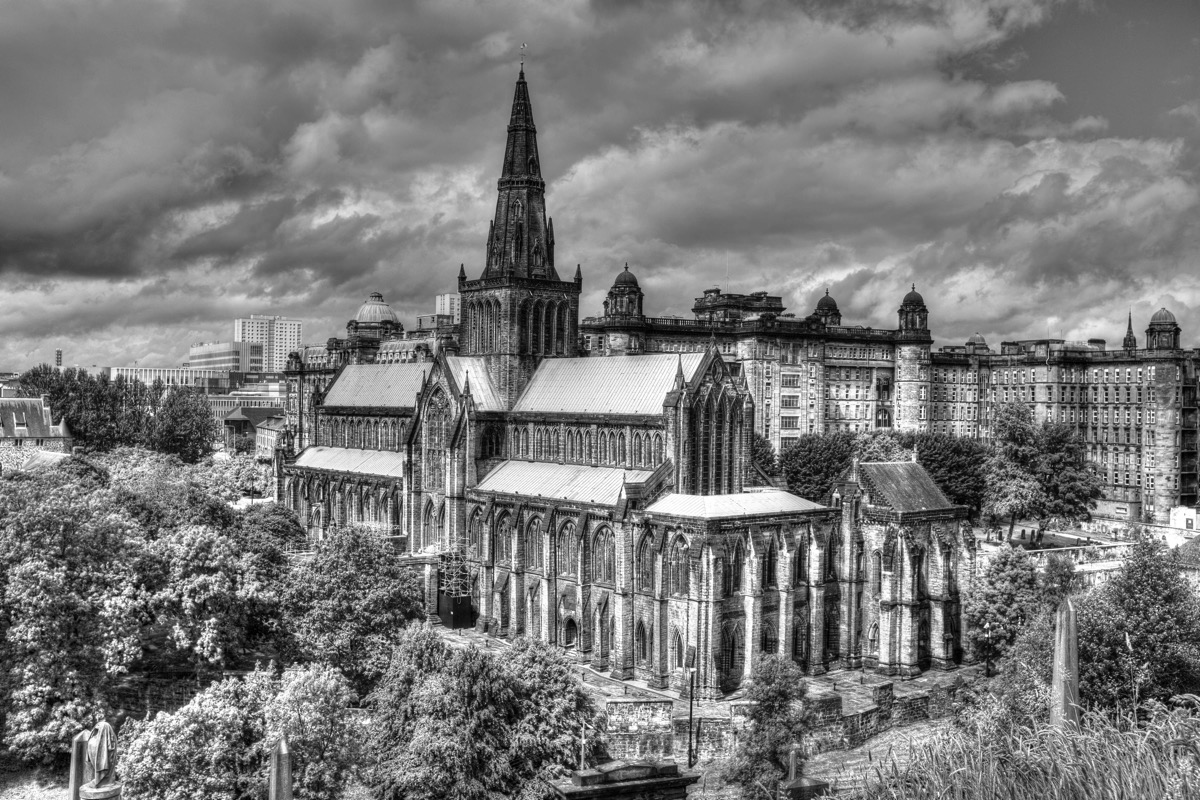
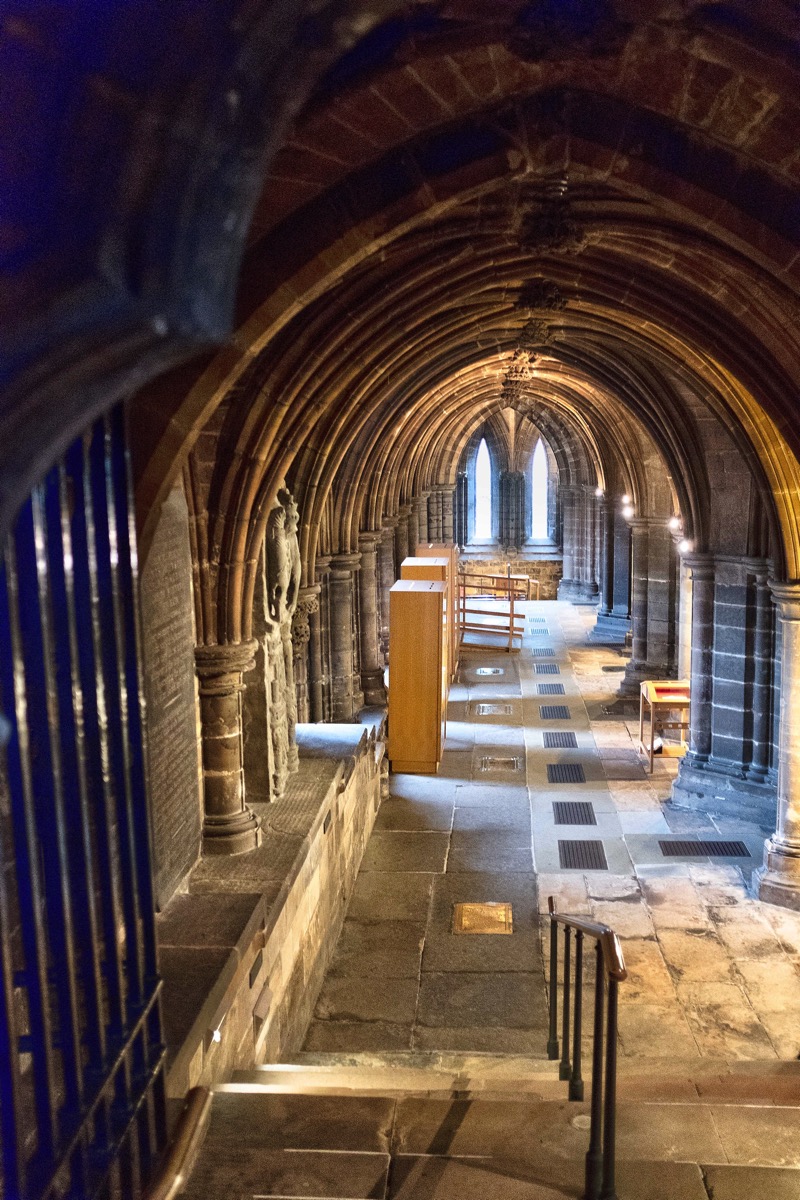
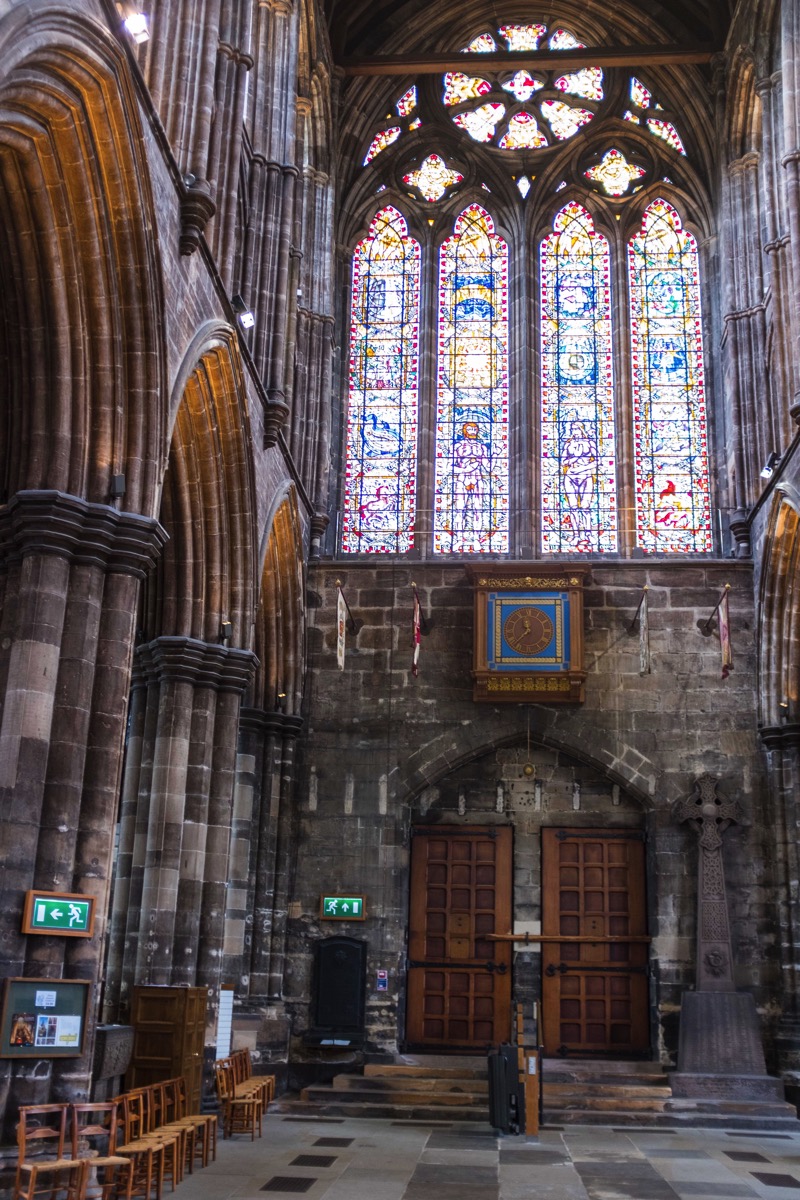
St. Mungo’s tomb. The patron saint of Glasgow.

An interesting site looming above the Glasgow cathedral is the Glasgow Necropolis, a Victorian cemetery. https://en.wikipedia.org/wiki/Glasgow_Necropolis
The Necropolis is approached by the”Bridge of Sighs” pictured below.
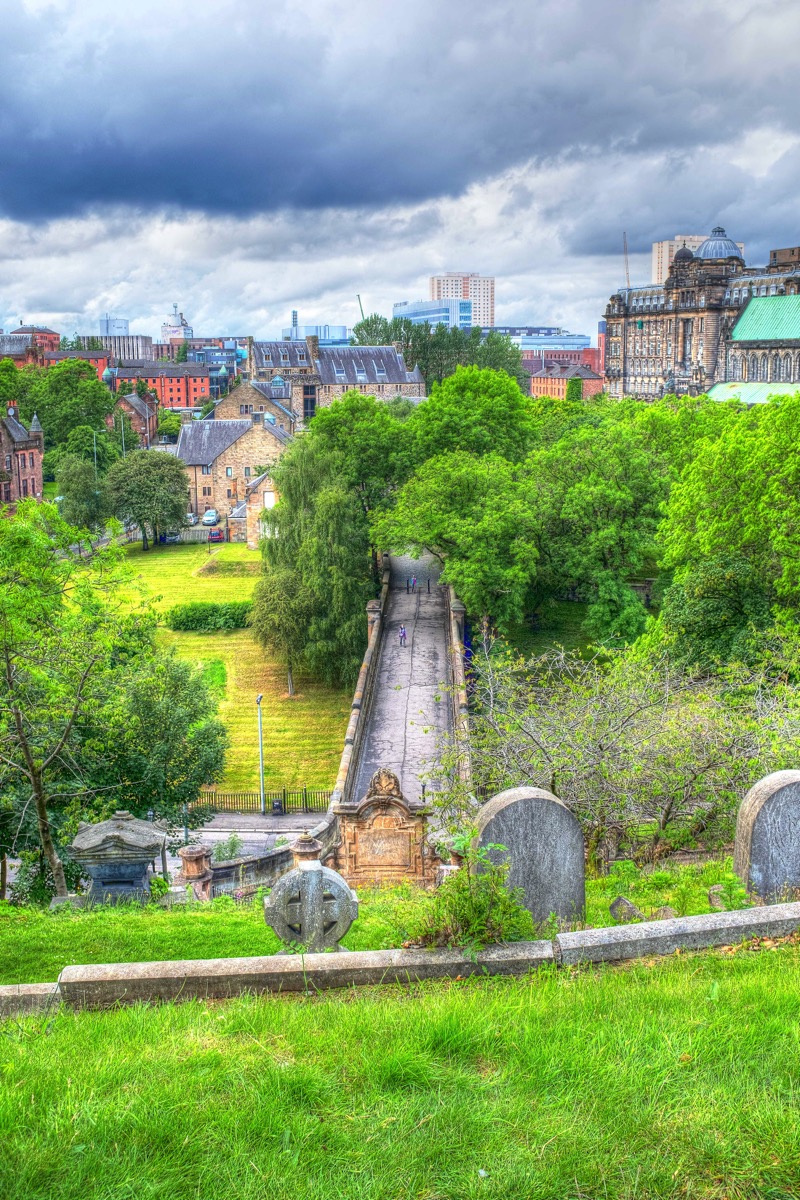
A couple of shots from the cemetery.
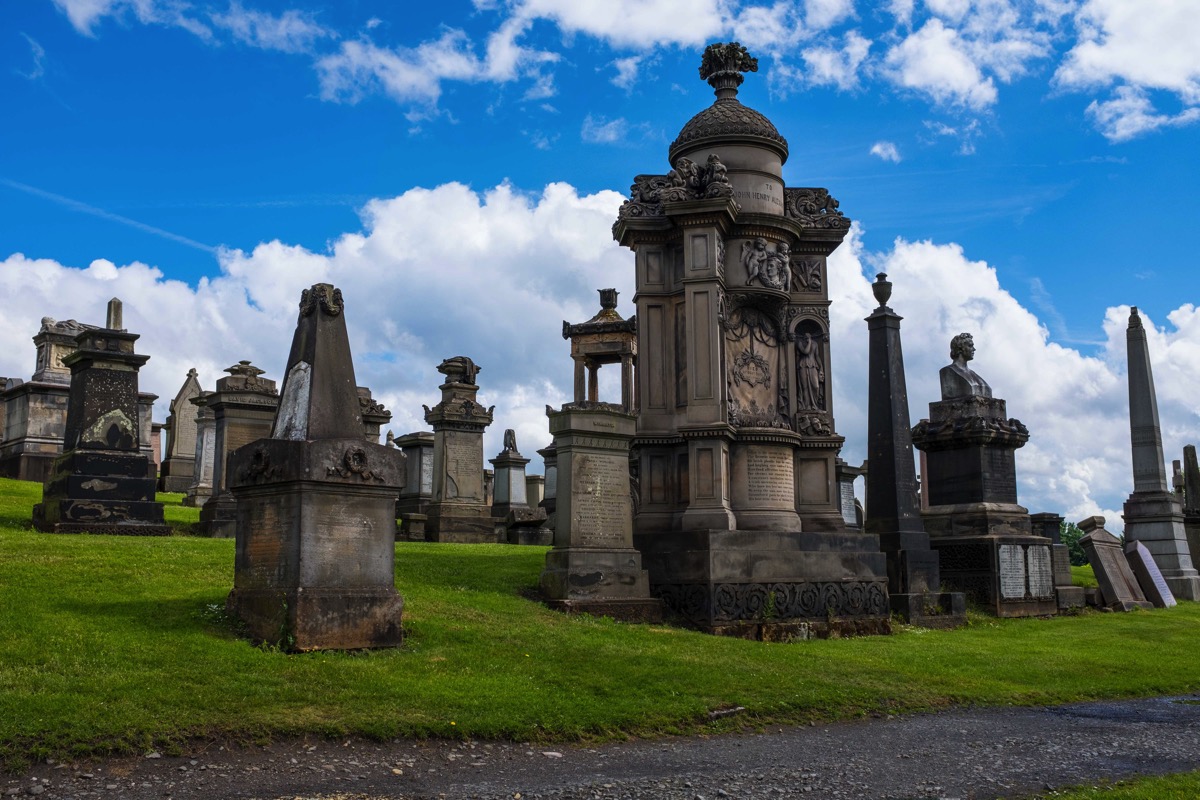
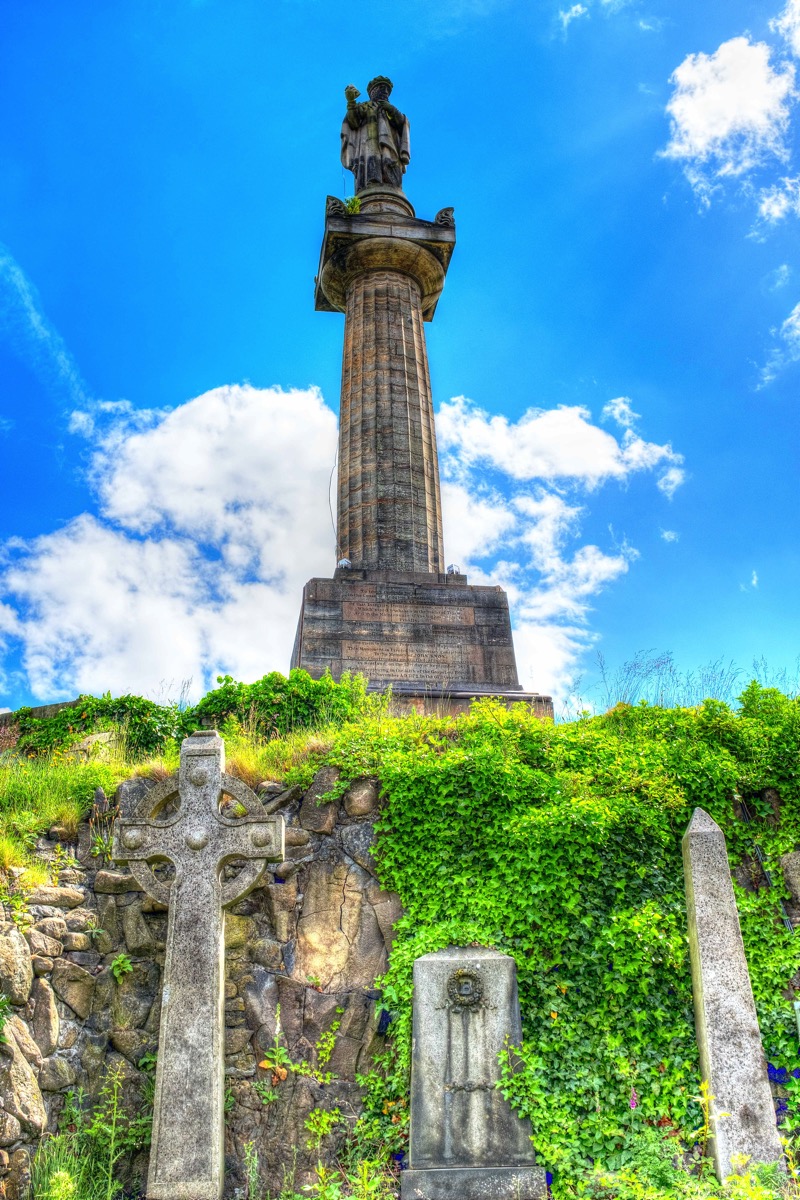
Some more from around Glasgow.
Spire of the University of Glasgow through the trees. One of the four oldest universities in the English speaking world. https://en.wikipedia.org/wiki/University_of_Glasgow
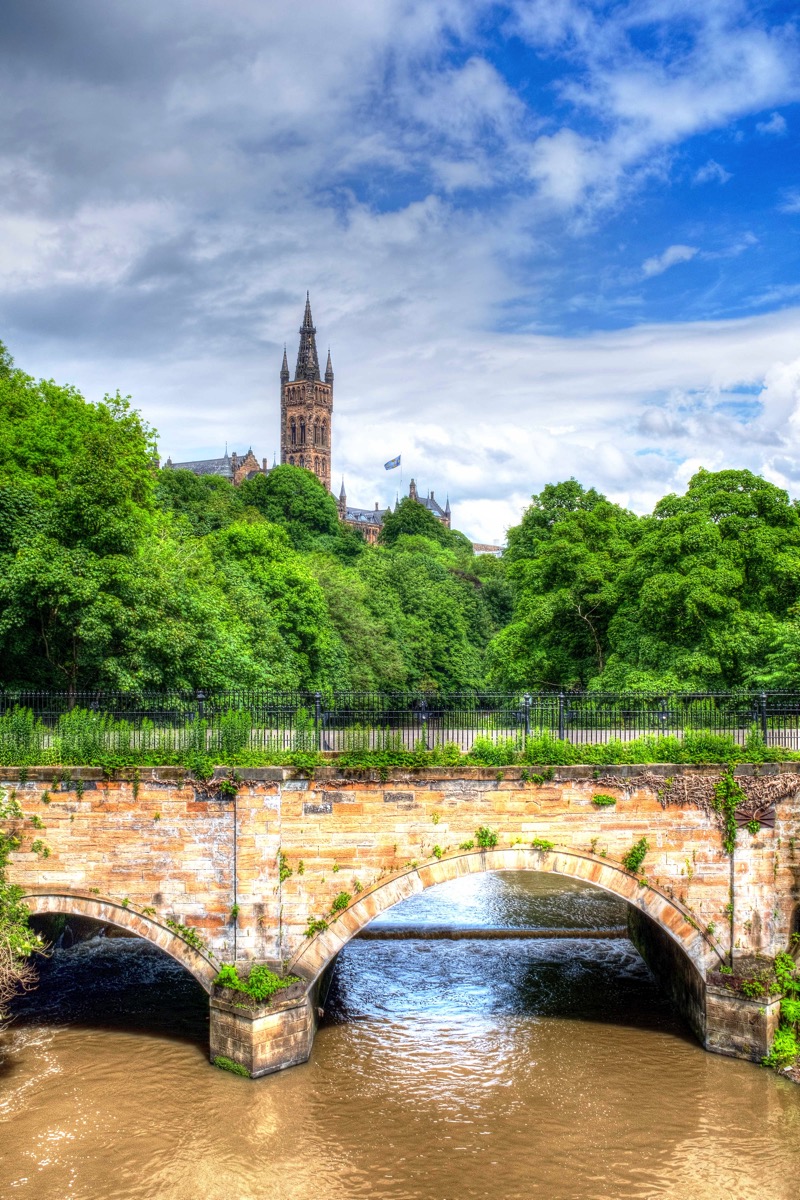
A restaurant near the University where we grabbed some lunch. (Cottie’s Restaurant) In the basement of an old church.
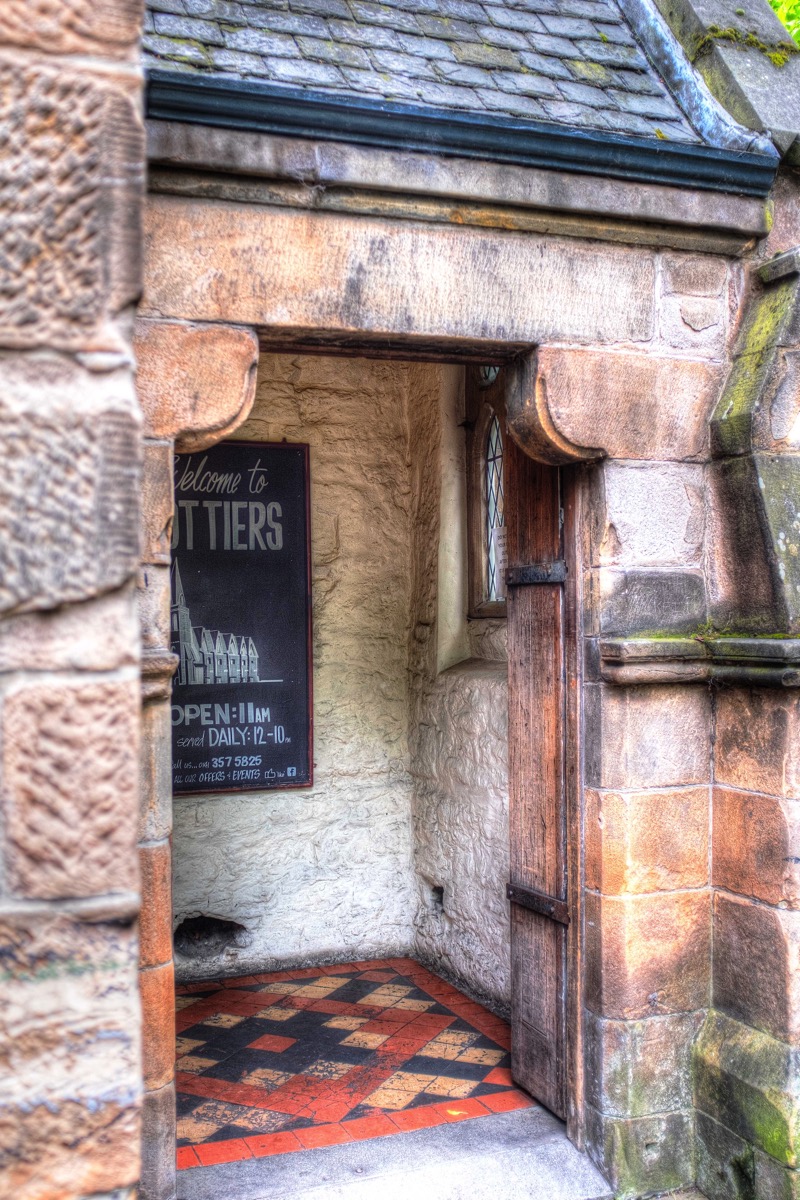
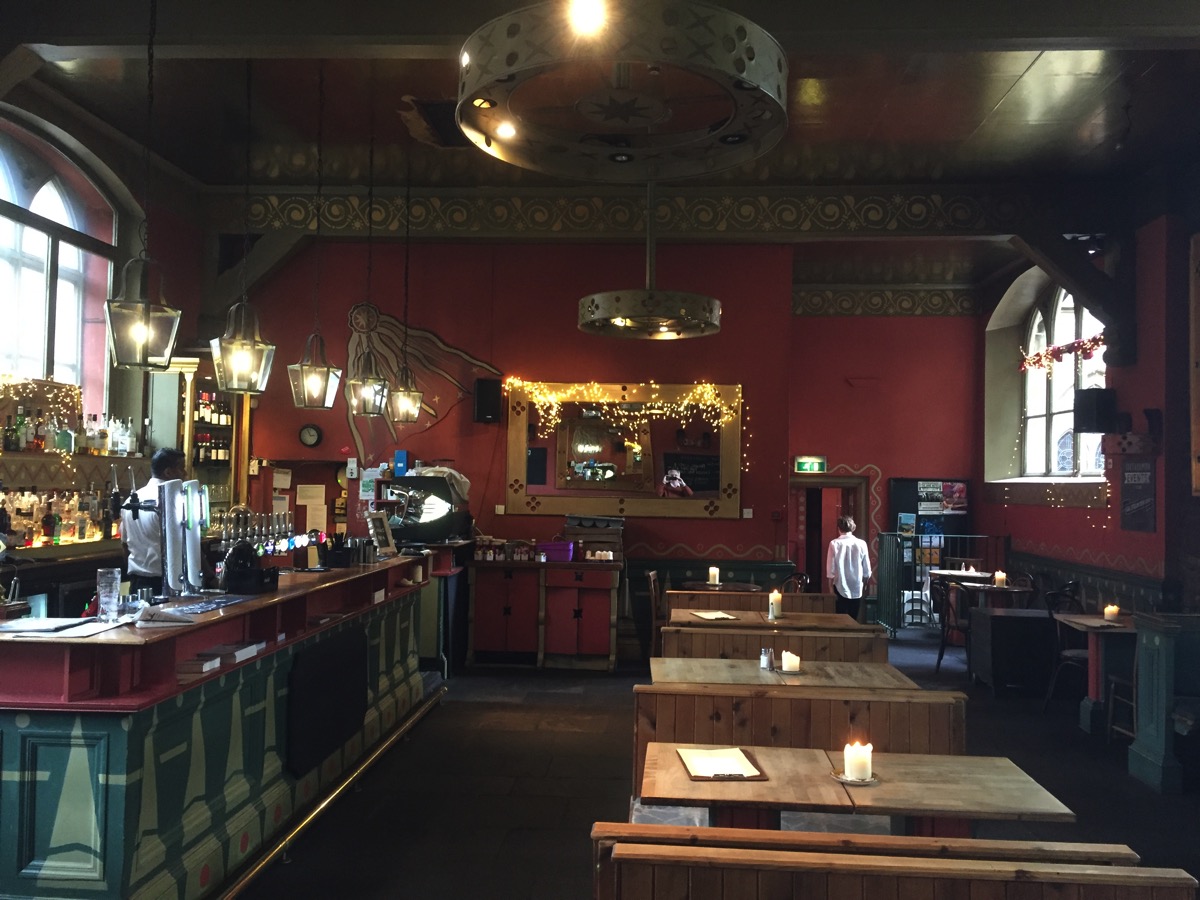
From the Riverside Museum of Transportation. https://en.wikipedia.org/wiki/Riverside_Museum
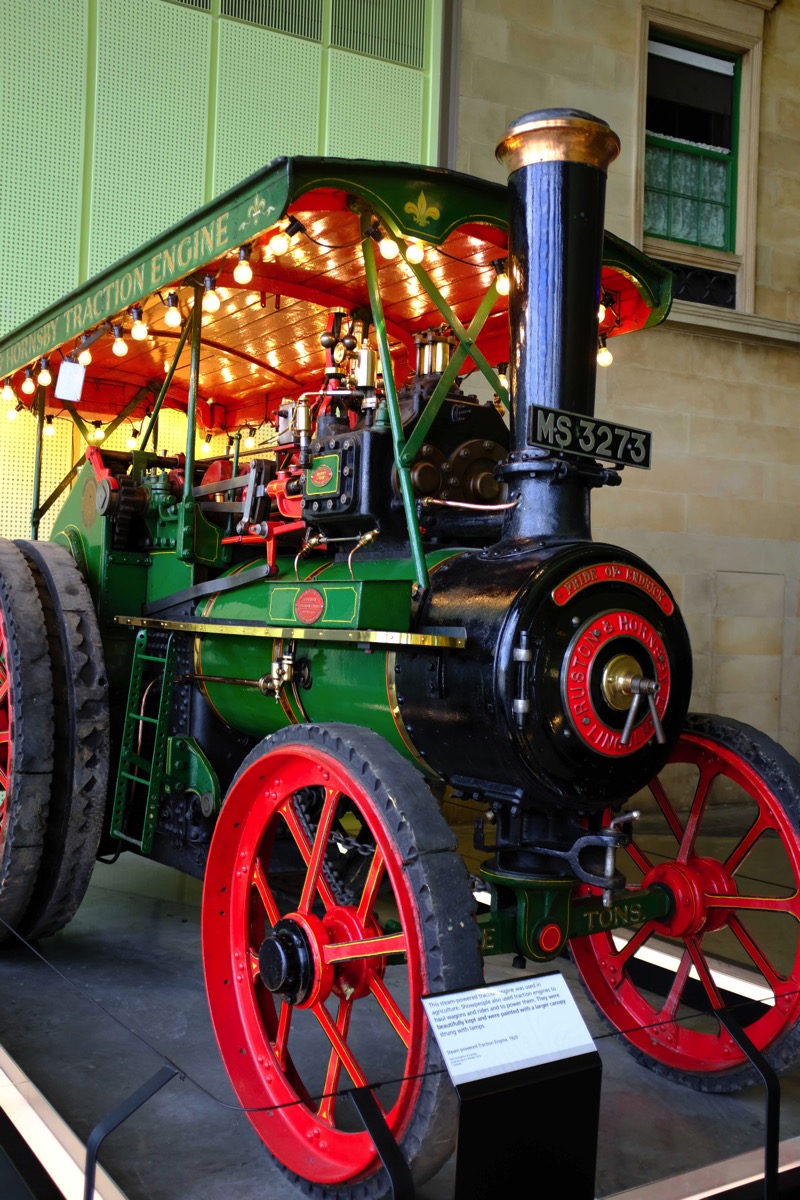
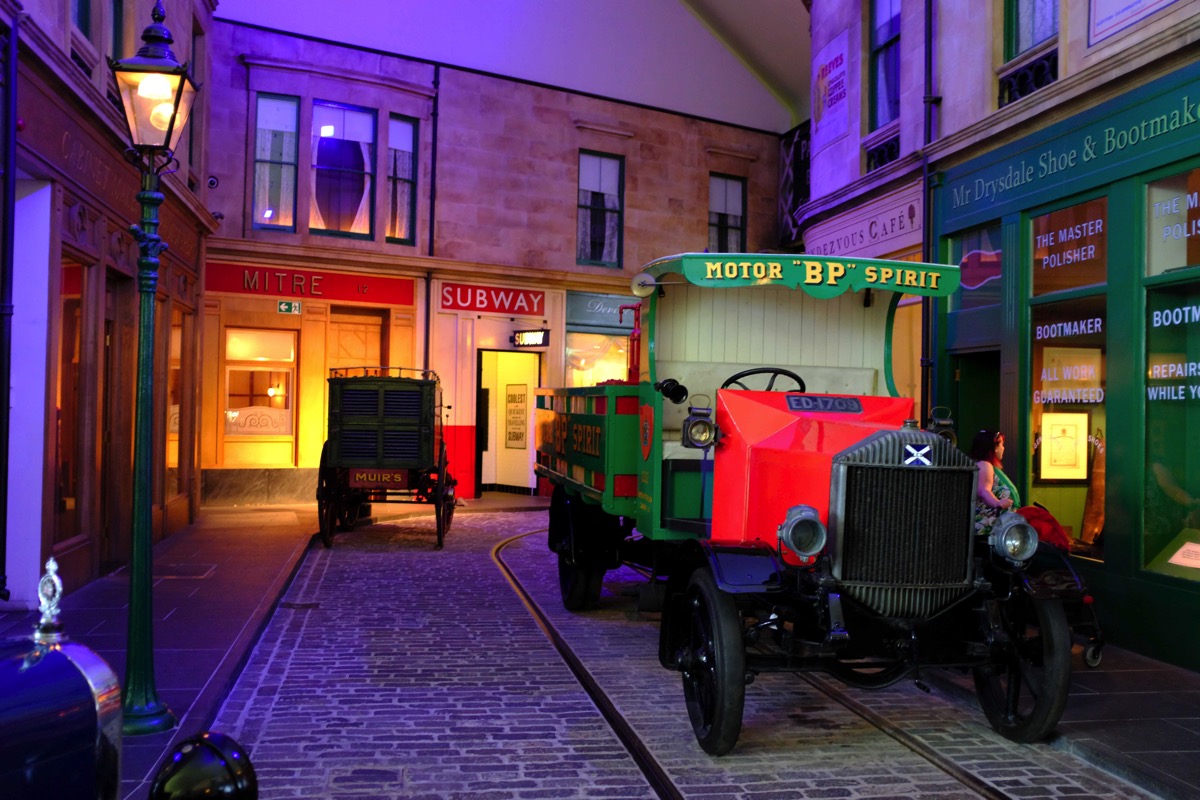
Unfortunately, we only had one full day in Glasgow, leaving the next day for a one night stay in Fort William. We caught the West Highland Line train from the Glasgow Queen Street station to Fort William. The trains are the way to travel in Scotland, clean, comfortable and run on time. We both love traveling by trains, and that would be our whole trip this time. Â A driver named Mary picked us up at the Fort William train station and took us on the 15 minute drive to our palatial residence for the night, the Inverlochy Castle Hotel. The hotel is truly elegant with a fine restaurant to boot.
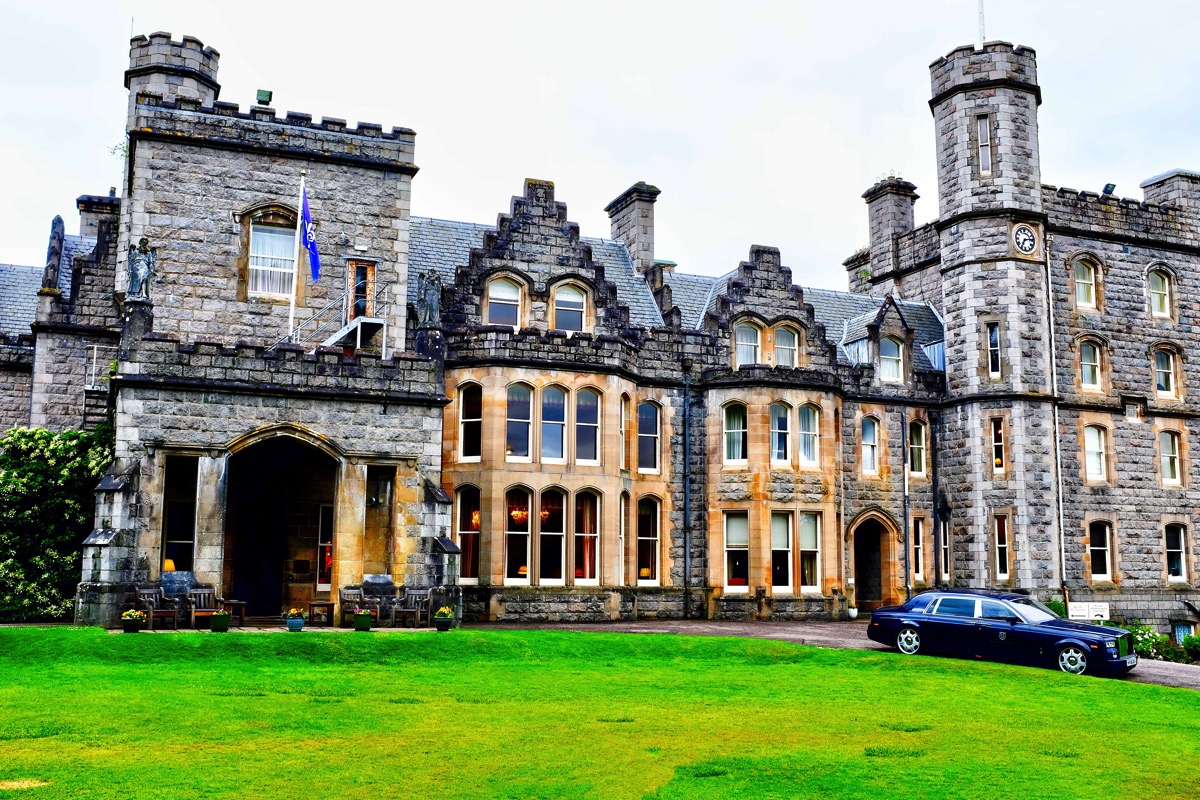

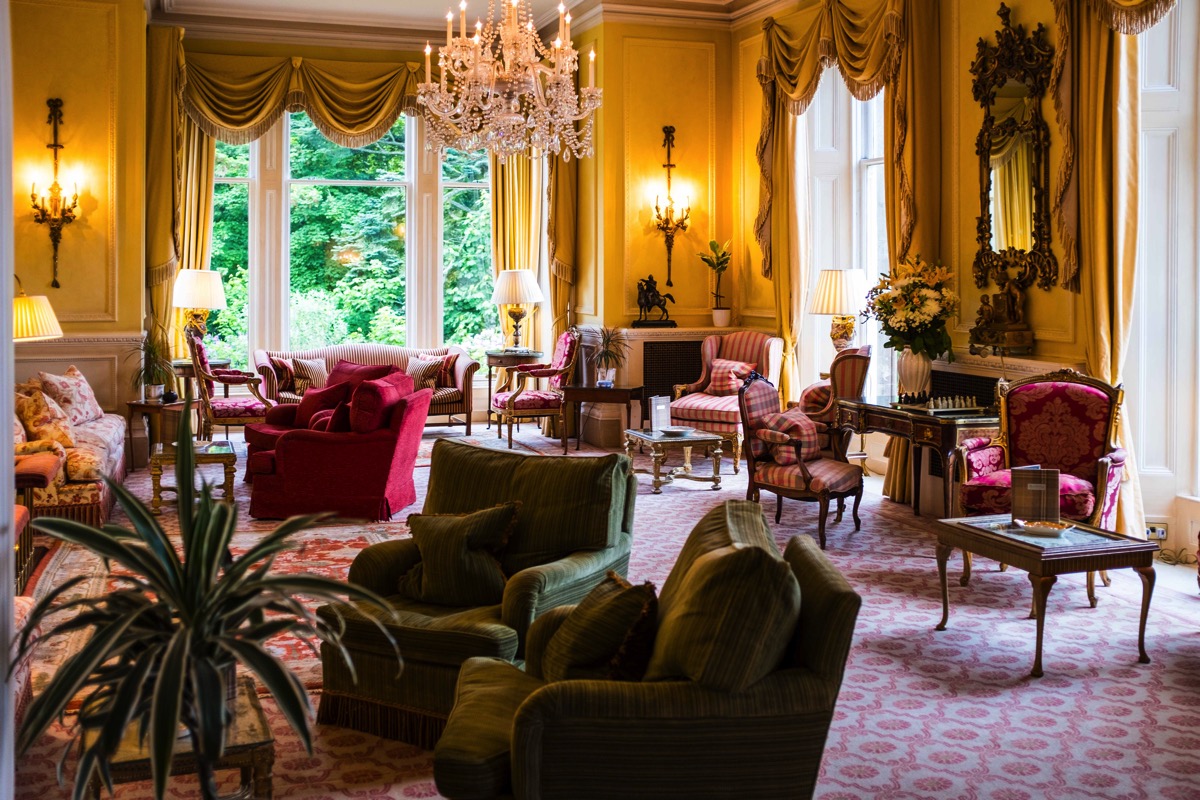
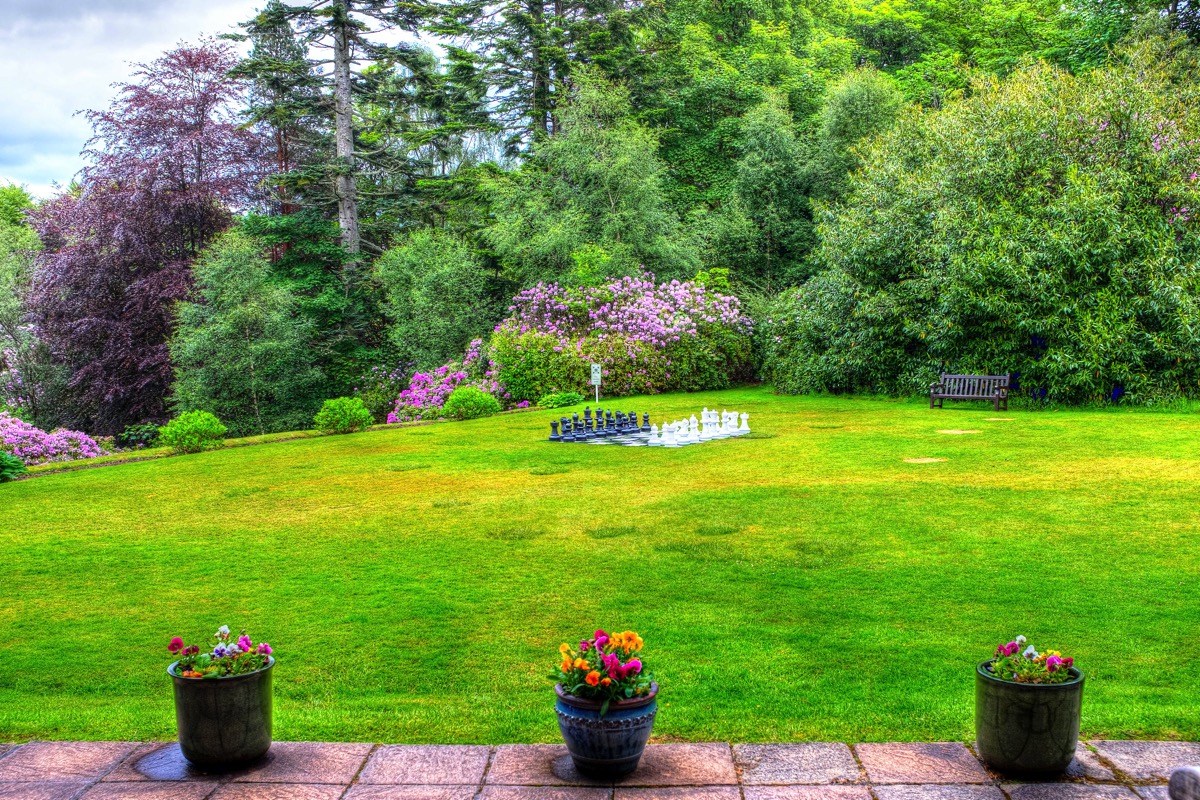

The menu for our five course gourmet meal at the Inverlochy. Notice the slow cooked duck egg. If you have never had the chance to savor a duck egg floating in a brown sauce, consider yourself lucky. Looked kind of like an eye floating in soup, and tasted slimy. But obviously a delicacy which we were too pedestrian to savor.
After our night at the Inverlochy, Mary picked us up for our trip on the Jacobite Steam Train. More to come.
